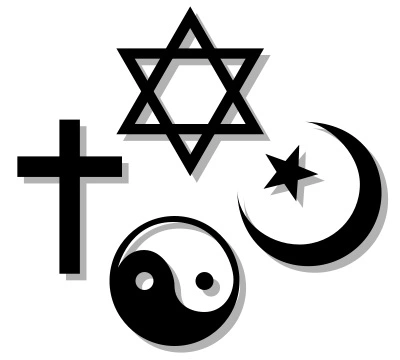Dance and religion
Publié le 22/02/2012

Extrait du document

The signifi cance and role
of religious dancing. Like the music that usually
accompanies it, dance has had a very wide role
in religion but has sometimes been regarded with
suspicion for its intoxicating effect and its association
with sensual feeling. In primal societies, dance
frequently served the role of creating sacred times
and places, dances being occasions of rich community
activity when the gods were close and perhaps
even possessing people while they danced.
Shamans especially danced to create and express
their ecstasy as their patron god danced through
them (see SHAMANISM).
Dance has been performed and interpreted in
different ways. In HINDUISM, dance often expresses
the nature and mythology of the gods. The great
god SIVA is called "nataraja," king of the dance, and
his repertoire of 108 dances enacts the stages of
the world from creation to destruction. In SHINTO,
sacred dance is more often seen as an offering to
the gods for their entertainment. So is it also in
China, though the solemn dance RITUALS of Confucian
students and mandarins also powerfully
express the traditions and cohesion of their class.
In the more devotional wings of JUDAISM (HASIDISM)
and ISLAM (SUFISM, the "whirling dervishes"), dance
expresses religious ecstasy or at least uninhibited,
loving PRAYER and fervor. In the Catholic traditions
of CHRISTIANITY, folk dances have usually been tolerated
as a part of the celebration of holidays like
May Day or CHRISTMAS but have rarely had a part
in formal WORSHIP itself. PROTESTANTISM has tended
to reject dance altogether, or to regard it as purely
secular.
In recent times, however, there has been a
move in some quarters to revive sacred dance,
even performing decorous and expressive modern
dances as parts of church or temple services. In
Pentecostal circles, on the other hand, free and
ecstatic dancing has increasingly arisen spontaneously
as a sign of the Holy Spirit. Some of the new
religions of Japan, like TENRIKYO and Odori Shukyo
(the "Dancing Religion"), have made dance their
central act of worship. In one form or another, dance seems sure to be a part of religion for a long
time to come.
Liens utiles
- Relationship between religion, spirituality, and young Lebanese university students’ well-being.
- dance and the different types of choreographie process
- Popular and Social Dance I INTRODUCTION The Cakewalk The cakewalk, a dance of African American origin, was intended to lampoon high-strutting whites at fancy dress balls.
- Folk Dance I INTRODUCTION Traditional Irish Dancing Irish dancing comprises mainly reels and jigs and may be accompanied by lively folk music played on the fiddle, harp, or bagpipes.
- dreams and religion








